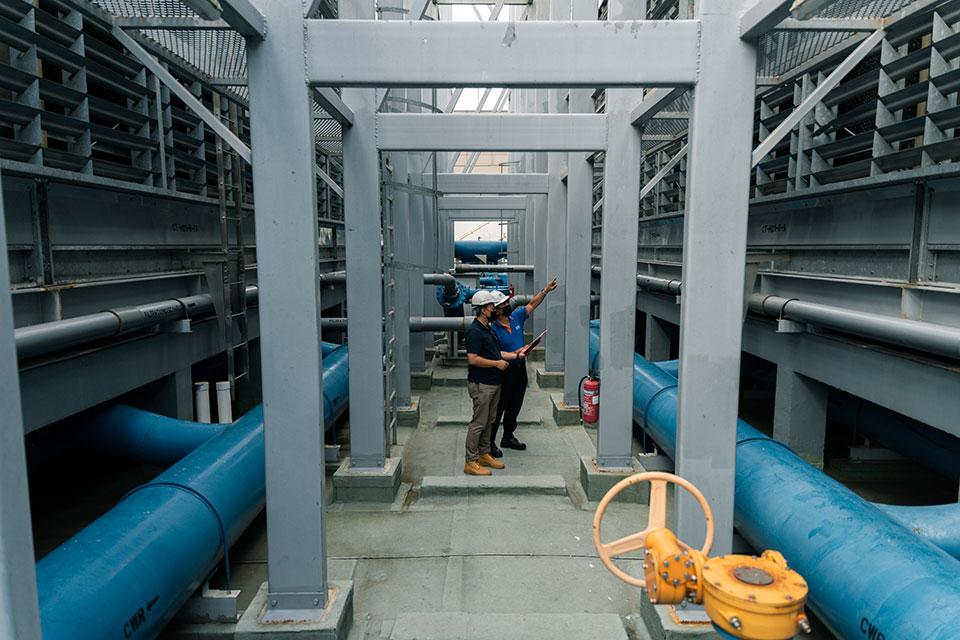Increasing Water Efficiency in Cooling Towers
Cooling towers are an integral component of the chiller plant systems used throughout the campus. They dissipate heat – absorbed in circulating cooling water systems used to cool buildings – into the atmosphere through evaporative cooling. Therefore, by design, cooling towers use significant amounts of water.
Evaporative cooling in such towers accounts for roughly one-third of the total water consumption on the NUS Campus, the bulk of which is from NEWater. It was thus identified as an impactful area of focus for the University’s water conservation efforts.
As the water evaporates in a cooling tower system, it leaves behind dissolved solids in the water. For greatest water efficiency, the allowable concentration of dissolved solids in the recirculated cooling tower water should be maximised, while ensuring that it does not cause scaling and corrosion within the system. By optimising the operational conditions – via adjusting the cycles of concentration (CoC) for dilution – the water consumption can be reduced significantly. Thus, raising the CoC from the (minimal) CoC of 7 to 10 has resulted in estimated water savings of 22,000 cubic metres annually.

